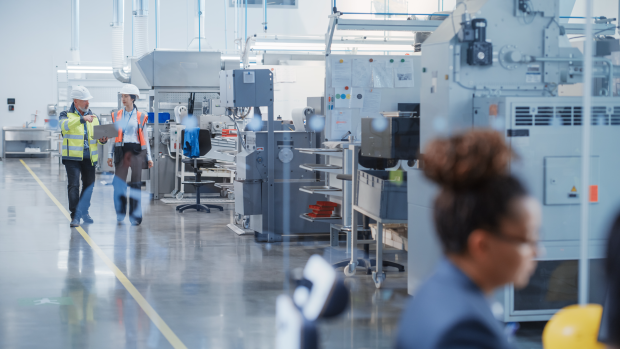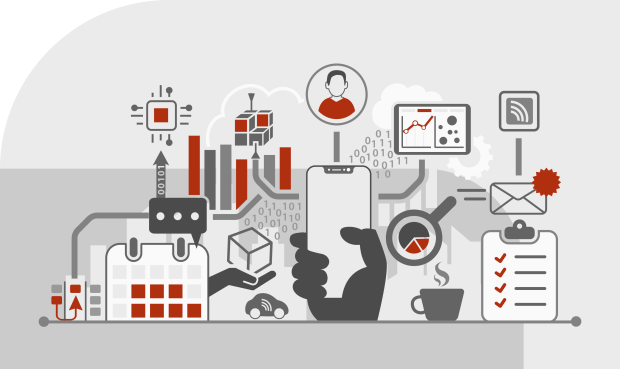The New Machinery Regulation – important changes and some questions
From January 2027 onwards, the new Machinery Regulation (EU) 2023/1230 will apply. It will replace the current Machinery Directive 2006/42/EC. The Machinery Regulation is a directly applicable EU regulation. This means that it is applicable in all EU member states without national transposition laws.
Although new legislation may sound dry in theory, some parts will result in relevant, maybe even exciting practical changes. In this blog article, I will discuss these changes and how they will affect technical documentation.
Some changes concern structure, while others affect content. For example, relevant terms such as “placing on the market” have been defined or specified. Additionally, the new Machinery Regulation lists new topics, the most interesting of which are Artificial Intelligence, (Cyber) Security, and changes to the documentation format.
Artificial Intelligence
The term Artificial Intelligence or AI as such is never used. Instead, the Machinery Regulation speaks of “fully or partially self-evolving behaviour using machine learning approaches ensuring safety functions”. Talking about such self-evolving behaviors is a step toward future-proof legislation. parson’s whitepaper on the use of AI in technical communication provides more information on the European AI Act and legislation for Artificial Intelligence.
According to the Machinery Regulation, AI-controlled machinery must not “perform actions beyond its defined task and movement space.” It must also be “possible at all times to correct the machinery or related product in order to maintain its inherent safety.” This means that while using AI for/in machinery is allowed, it must not become uncontrollable.
Documentation obligations under the Machinery Regulation
As before, instructions for use and safety information “shall be clear, understandable and legible”. More interesting for technical communicators are the documentation obligations of the new Machinery Regulation. Articles 10 and 13 list most of the obligations, including the general requirement to provide technical documentation and instructions for use for machinery. Annex IV lists what must be included in the documentation.
Many aspects are not new, such as the complete description of the machinery and its intended use, but there are some new items that may raise eyebrows. For instance, the Regulation requires the documentation to include “the source code or programming logic of the safety related software to demonstrate the conformity of the machinery or related product with this Regulation” and sensor data.
Digital delivery now possible
Article 10 may be the one which brings the most change to our profession: It states that instructions for use “may be provided in a digital format.” This is novel for content delivery. Up to now, printed documentation was required.
However, “digital format” is a broad term: There is no distinction between simple PDF and personalized content delivery. Additional conditions apply to the digital form. The conditions for digital documentation are set out in Article 10 No 7. When the instructions for use are provided in digital format, the manufacturer shall:
“a) mark on the machinery or related product, or, where that is not possible, on its packaging or in an accompanying document, how to access the digital instructions;
b) present them in a format that makes it possible for the user to print and download the instructions for use and save them on an electronic device so that he or she can access them at all times, in particular during a breakdown of the machinery or related product; this requirement also applies where the instructions for use are embedded in the software of the machinery or related product;
c) make them accessible online during the expected lifetime of the machinery or related product and for at least 10 years after the placing on the market of the machinery or related product.”
Furthermore, the product model must be clearly described in the operating instructions and the information to which they correspond. This means that the instructions must correspond to the specific model.
There is one exception to the digital-only delivery: The safety-related information for machines and associated products that are intended for non-professional users, i.e. consumers, or that may fall into the hands of non-professional users, must be available in paper form.
Open questions/challenges with the Machinery Regulation
- Marking how to access the digital instructions and keeping them accessible for at least 10 years: If the information is provided online, the access point (URL) cannot be changed for the next 10 years.
- To what extent can manufactures be held responsible for the security of online access? Must they provide virus protection, etc.?
- If the digital instructions must be accessible, can content delivery be personalized? Can there still be access restrictions in a content delivery portal?
- How is the expected lifetime of a machine calculated? Are there existing legal frameworks?
- Documentation must be printable and downloadable. This excludes videos as stand-alone documentation. But what does “printable” mean – do documents still have to exist or is it sufficient if individual topics of the documentation can be printed?
- “… at the request of the user at the time of the purchase, the manufacturer shall provide the instructions for use in paper format free of charge within one month.” What is the time of purchase: purchase date, delivery date, date of putting to use? What is the time frame for the delivery of documentation for special machinery construction?
Consequences for technical communication
These are the main consequences for technical communication:
- Digital delivery of documents will be possible. Safety-related information for non-professional target groups must remain in print. This makes target group analyses more important for manufacturers. Only then is it possible to decide whether and what information needs to be supplied in paper form in addition to the digital version.
- Digital delivery formats must be printable and downloadable. The PDF format will therefore remain relevant as a delivery format, as it fulfills both requirements. Videos will not replace documents.
- Online formats must be accessible during the expected lifetime of the machinery or related product and for at least 10 years. Documentation and customer portals that allow technical documentation to be accessed and downloaded must therefore be stable and available over a long period of time.
- Printed documentation for an ordered machine model must be made available free of charge within one month at the customer's request. It must therefore be possible to compile and deliver the appropriate documentation for a customer order. To make this possible, it is necessary to move away from document- or chapter-based documentation. Smaller documentation modules (topics), which are equipped with metadata, enable the flexible compilation of order-specific documentation.
- Documentation includes not only instructions for use, but also source code, sensor data, test results, … (requirements listed in Annex III and IV).
Technical documentation by parson
Our technical communication experts create user-friendly and state-of-the art operating instructions, product information, and service information that comply with the applicable Machinery Regulation and leave no questions unanswered. Find out how.
Do you need professional help with the initial digitization of your documentation? Would you like to prepare your content in a smarter way? We can also help you break down documents into topics.


